Research Facilities
Home » Faculties of Science » Departments » Chemical Sciences »Analytical activities in our department include water analysis for persistent organic pollutants, cosmetic ingredients for quality check; drug residues in edible products; pharmacology of bioactive compounds; primary and secondary metabolites from plant sources; method development for optimisation of analyte detection; analysis of synthetic organic and organometallic compounds as well as the characterization of nanomaterials. To support these research activities, the department boasts a myriad of key analytical equipment and techniques that include spectroscopic, chromatographic and mass spectrometric techniques such as Atomic Absorption Spectrophotometers, Ion or Liquid Chromatography coupled with Inductively Coupled Plasma Mass Spectrometry (IC or LC–ICP–MS), ICP-OES, Gas Chromatography (GC), Liquid Chromatography (LC), GC-Mass Spectrometry (MS) and LC-MS, Nuclear Magnetic Resonance (NMR), Total Organic Carbon (TOC) Analysers, CHN Elemental Analyser, Fourier-Transform Infrared (FT-IR), Ultra Violet-Visible (UV-Vis) and Fluorescence spectrophotometers. Furthermore, these instruments are also used to train and equip undergraduate students with relevant chemical analysis skills. Some of these instruments are listed below.
Gas Chromatography
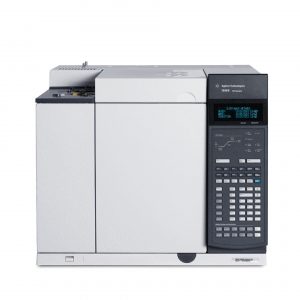
Agilent GC System
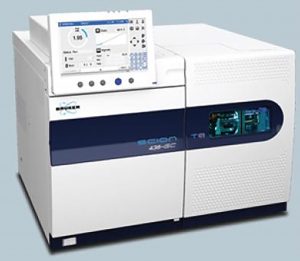
Bruker Scion GC
ICP-OES and ICP-MS
The Department of Chemical Sciences has developed a wide range of expertise in the analysis of several elements within a diverse and wide range of samples; such as, water (tap, river, lake, dam or pond), food, soil, wastewater, acid mine drainage, oil, and many more.. This analysis has been achieved with either one of our state of the art ICP-OES or cutting edge ICP-MS. About 70 elements in the periodic table (except C, H, O, N, the halides & inert gasses) can be analysed by these systems, and we routinely analyse from part per million (ppm) to as low as parts per trillion (ppt) concentration levels. The department currently has a Thermo iCAP 6500 ICP-OES and Shimadzu ICPE-9820 to measure major and trace elements down to upper ppb levels while an Agilent 7900 ICP-MS system performs ultratrace analysis.
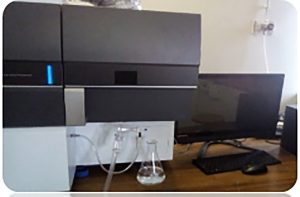
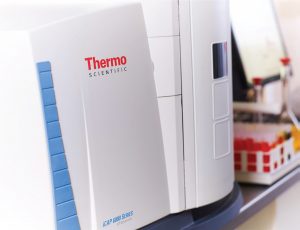
NMR
The Department of Chemical Sciences has access to a Bruker Avance III 400 MHz NMR spectrometer that is equipped with a 60-slot auto sampler as well as a Bruker Avance III HD 500 MHz NMR spectrometer that is equipped with a 24-slot auto sampler and has solid–state capabilities. The 400 MHz spectrometer housed in Chemical Sciences Department is a routine instrument equipped with a BBO probe whereas the 500 MHz that has three probes (BBO, BBI and Solid-State) is housed at Spectrum (The Central Analytical Facility of the Faculty of Science). The instruments can perform multinuclear experiments that include 1D NMR (1H, 13C, 31P, etc.), 2D (COSY, 1H-13C HSQC, 1H-15N HMBC, etc.) and solid state NMR (CP MAS, 29Si, 195Pt, etc.) to support research. Experiments can be performed at variable temperatures depending on the structural characteristics of molecules being investigated. We also have a 60 MHz benchtop Magritek Spinsolve 60 NMR spectrometer. The instrument uses a solid-state magnet, operating at a 1H frequency of 60 MHz. While this is not the strongest magnet available, it does come with some features that make it ideal for teaching and research applications, it is convenient and easy to operate and maintain.
STA7000 Series Simultaneous Thermogravimetric Analyser
The Department of Applied Chemistry has a Hitachi simultaneous thermogravimetric analyzer (STA7000 Series). The instrument is capable of routine thermogravimetric analysis on a variety of samples from ambient to 1500 ºC under reducing, oxidising or inert conditions. In addition, the instrument is fully capable of running DTA/DSC experiments over a wide of temperatures and is equipped with the ‘Real View STA’ sample observation option. This option allows for the real-time imaging of sample changes during TGA and DTA/DSC experiments, along with the requisite software to carry out dimensional analysis on the captured images. Currently, the department analysis a variety of samples; such as polymers, composites, carbon materials/nanomaterials, ceramics, ores, and a range of R&D materials.
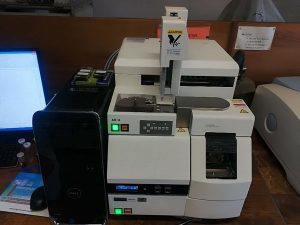
Other Instruments
| Rheomixer | AAS Varian | AUTOLAB Electrochemical Workstation |
| BET Surface Area and Porosity Analyzer | Contact Angle Measurement | Cross Flow Water Filtration System |
| DIONEX ICS-2000 | Fluorescence excitation-emission matrix (EEM) spectrophotometry | GC Headspace |
| Forward Osmosis Water Filtration System | Freeze Dryer | HPLC (HP) |
| GC SRI | Nanosizer | TGA-FTIR |
| HPLC (THERMO) | Polarimeter | Polarographic Analyzer |
| UNISCAN Electrochemical Workstation | UV/VIS ULTROSPEC | ZAHNER Electrochemical Workstation |
